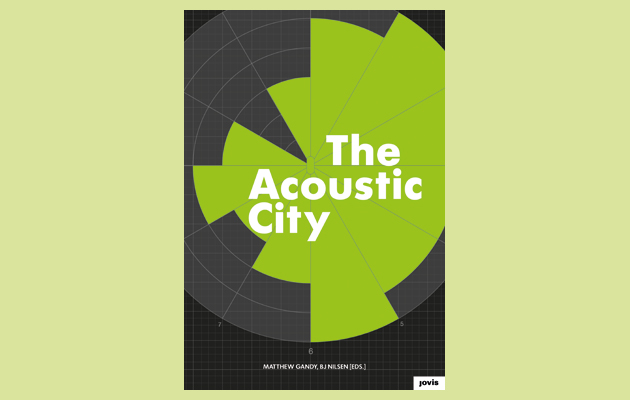|
|
||
|
Sukhdev Sandhu welcomes an exploration of how sound shapes – and is shaped by – the urban landscape, from the Heathrow flightpath to Eddie Van Halen’s backyard Sound studies is an ever-growing field, spawning new journals, conferences and gallery shows at an incredible rate. Even the worlds of marketing and brand management have noticed: Joel Beckerman’s The Sonic Boom, published last year, talks about how to “harness” and “strategically deploy” sound in order to create emotional connections, lure customers into stores and make them feel warmly towards products. If it was once common for artists and philosophers to discuss sound as a kind of experimental landscape – seen as mysterious, demanding special levels of empathy and imagination of its explorers – now it increasingly resembles a commodity: precious real estate to be grabbed by academics, manna for retailing R&D. Matthew Gandy and BJ Nilsen’s The Acoustic City is a snapshot of where the subject currently stands, complete with a CD of field recordings, compositions and composites of the two. The book brings together essays, mostly free of academic jargon, by a wide range of researchers – among them composers, scientists and architects. These are grouped into sections such as “Acoustic Flânerie”, “Sound Cultures” or “The Politics of Noise”. The key theoretical contribution comes from Steven Connor, who argues that soundscapes are more than just accumulations of sound; they need relations, they need to be heard (consciously or unconsciously) by a listener. It’s tempting to apply this notion to the visual imagery produced by the architectural profession: so many of the buildings and urban landscapes it renders are bereft of people. One of the most suggestive essays is Soft Coercion, the City, and the Recorded Female Voice, in which philosopher Nina Power draws attention to the growing use of women to communicate information on public transport, deliver instructions to supermarket shoppers, or make security announcements. Their voices, she argues, are “ghostly, disembodied, usually pre-recorded and extremely narrow in terms of origin, class and pitch – [and] are everywhere”. They represent authority, but not in a gruff or domineering fashion. Like muzak, they are a kind of mood music, one designed to make daily life seem less abrasive or attritional. It’s their emollience that Power finds creepy: “What if the smooth running of things was the emergency? … a kind of cover story for a normalcy that is in fact a state of emergency, of crisis, of barbarism, and capitalism.” Some of the most fascinating contributions offer speculative readings of the way rock music has been informed by new urban terrains. John Scanlan looks back at Reyner Banham’s celebration of a Los Angeles full of “wonders wrought in backyards by high-school dropouts” and at Frank Gehry’s apparently unfinished Santa Monica home, with its chain link fence and corrugated metal siding; he sees in them analogues, not only for the “Frankenstrat” guitar of Eddie Van Halen, but for the early music of his eponymous band. In the rocker’s use of masking tape and black and red paint, as well as in his soaking of modified pickups in stove-heated surfboard wax, Scanlan identifies an LA form of “backyard” aesthetics that contributed decisively to Van Halen’s “warm”, “brown” and very popular sound. Equally fascinating is geographer Andrew Harris’s Margins Music: Lost Futures in London’s Edgelands, in which he lassoes the experimental and critically revered rock-electronic fusions of early-1990s bands Bark Psychosis and Disco Inferno to the east London / Essex areas from which they hailed. These in-between landscapes – often known as edgelands, wastescapes or “the unofficial countryside” – are essentially messy and vaguely industrial expanses that city-dwellers see only as they whizz past on a train or by car. They induced, Harris claims, “a mood of unease and disaffection” and “a certain spark, provocation, and hallucination” that the bands’ pathbreaking records compellingly channelled. Other essays of note include Michael Flitner’s wonderfully titled Machines Over The Garden: Flight Paths And The Suburban Pastoral (on the soundscapes around Heathrow) and Stephen Barber’s reverie about the sound of abandoned cinemas. What would have been welcome, however, is more embedded, perhaps even journalistic accounts of the ever-more sophisticated ways in which sounds are produced by brand managers, experience engineers and, increasingly, military tacticians. The Acoustic City suggests that soundscapes are conflict zones: more insider accounts from the frontlines are still needed. |
Words Sukhdev Sandhu
The Acoustic City |
|
|
||

















